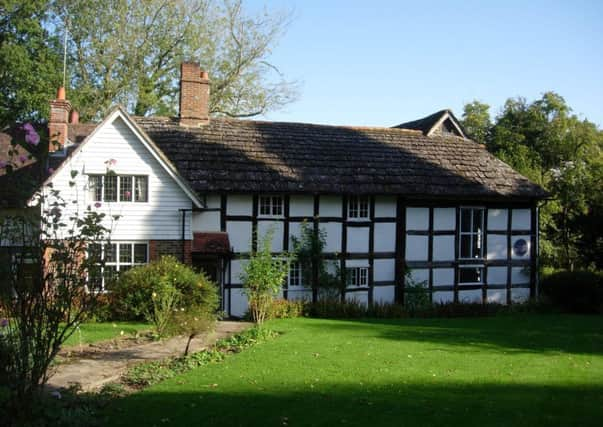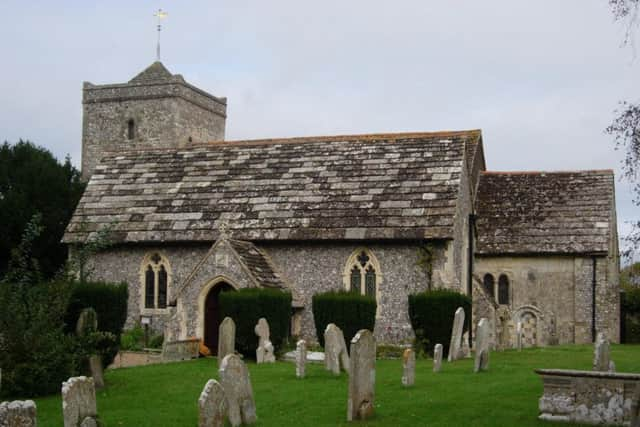Castle ruins, churches and Quaker landmark put on annual ‘at risk’ list


HAR is a campaign to save and repair these historic sites by creating an online list of all the sites needing help.
Since last year, hundreds of sites have been rescued and removed from the register including 30 sites in the South East, say English Heritage.
Advertisement
Hide AdAdvertisement
Hide AdIts website explains that this year, for the first time, the focus has been on places of worship as six per cent of all buildings on the register were places of worship.


The review took place with the help of many organisations who look after these places. This included the Church of England which oversees over 90 per cent of listed places of worship.
Some 116 of these places were in the South East region and the main threats on these types of buildings are the roofs, gutters and downpipes and the high level stonework.
In the Horsham district Sedgwick Castle, based in the Sedgwick Park House estate in Nuthurst is the ruins of a moated medieval castle.
Advertisement
Hide AdAdvertisement
Hide AdThe English Heritage At Risk report says that it has parts which are in a poor condition and is continuing to deteriorate.
Sedgwick Park House states on their website the castle dates back to the 13th century and is under the guidance of English Heritage.
Sedgwick Castle is said to have passed into the hands of the dukes of Norfolk and as the years passed, it fell into disrepair.
The website explains Queen Elizabeth I lent the castle to Sir John Caryll for 60 years. It is thought that he deserted and demolished parts of the castle to build Sedgwick Lodge with its materials.
Advertisement
Hide AdAdvertisement
Hide AdAn entry in the Domesday Book indicates that there was an older castle on the same site.
Although a conservation plan has been agreed, this now needs to be put into place to maintain and preserve the castle.
The Unitarian Chapel in Billingshurst High Street has also been classed as in poor condition by English Heritage.
The small brick and tile chapel was built in 1753 and has had extensions since and has been used for services and weddings.
Advertisement
Hide AdAdvertisement
Hide AdThe roof has slipped tiles and the valley guttering is damaged. There is also poor rainwater drainage and decay to the timber.
The church has been awarded a Heritage Lottery Fund grant and repairs are going ahead.
The chapel is currently closed whilst these are taking place, with services moved to Horsham Unitarian Church during this time, according to its website.
Once the repairs have finished, the church should be removed from the At Risk Register.
Advertisement
Hide AdAdvertisement
Hide AdWith its Wealdon sandstone walls and Horsham slab roofs, the Parish church of St Peter in Cowfold has recently had repairs to its tower, the valley gutter, drainage and the roof slopes but is still in a poor state, according to the English Heritage.
The large medieval village church is still at risk due to broken Horsham slab to the plaster ceilings in and around the altar inside.
The English Heritage and Heritage Lottery Fund grants have been given to the church for Phase Three repairs which were completed this year.
However, a further phase of work is needed to finish the repairs in order for it to be removed from the Risk Register.
Advertisement
Hide AdAdvertisement
Hide AdAnother place of worship on the list is the Blue Idol Meeting House and Guest House near Coolham. It was founded by William Penn who also founded the City of Philidelphia.
The At Risk Register says the building was originally a farm house and was converted to a Friends Meeting House in 1691.
It adds the building was in a very bad condition, the Horsham slab roof is in poor condition and there are problems with the framing.
Once again, there are currently English Heritage grant-aided repairs happening. It is now Grade Two listed and is split up into three parts. The main house which is private, a small flat for the wardens who tend to the gardens and the meeting house itself.
Advertisement
Hide AdAdvertisement
Hide AdWhile the repairs are taking place, worship will be at Storrington Village Hall. When they are finished, it is hoped the House will be taken off of the register.
Another medieval village Parish Church of St Peter in Upper Beeding is listed on the HAR register due to problems with its Horsham slab roof, its rainwater disposal and the stonework.
Again, an English Heritage/Heritage Lottery fund grant was awarded to help repair the tower and the valley gutter which has improved it however, more repairs are needed.
A privately owned bowl barrow on Black Hill in Colgate is listed on the register as declining. Bowl barrows are tomb monuments dating back to the Bronze Age. Alfoldean Roman site in Slinfold, which is also privately owned, is also listed as declining.
Advertisement
Hide AdAdvertisement
Hide AdAmberley Limeworks is also mentioned in the register with particular attention paid to the entrance buildings, one of its kilns and office. They are described as being in a poor condition with slow decay.
As a result of rain and little maintenance, this has led to weakness in the structure especially around the entrance and the kiln.
There are discussions in place about undertaking the repairs needed with this building.
English Heritage has been working closely with organisations to help raise funds to repair and restore the buildings on the HAR register.
Advertisement
Hide AdAdvertisement
Hide AdThese organisations include The Church of England, the Heritage Lottery Fund along with trusts and charities to aid with the fundraising.
Around £8.8 million was spent on 262 of the entries on the Heritage at Risk register within the 2013/2014 period.
English Heritage also focussed on Grade II listed buildings as part of the campaign. They state that even though they have the most comprehensive list of risk heritage, the state of the listed heritage is unknown at present.
Tests have already taken place in other areas which are beginning to recruit volunteers for when the project starts in Spring 2015.
Advertisement
Hide AdAdvertisement
Hide AdHelp from volunteers, owners and local authorities is needed with this to attempt to see the bigger picture nationwide and to find out where and why these landmarks are at risk.
More than 800 people have already signed up but they are appealing for more people up and down the country to survey Grade II listed buildings to help them in the campaign.
To join the campaign or for more information, see www.english-heritage.org.uk or call 0870 3331181